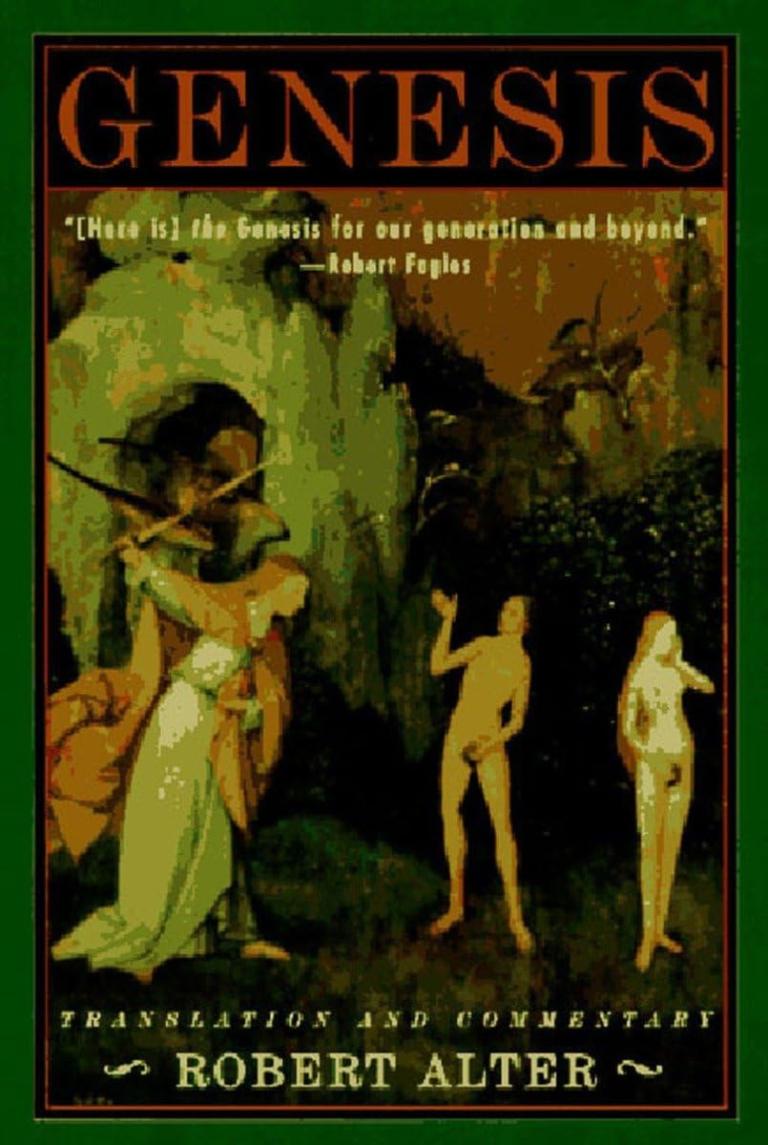Christ Jesus the One Mediator
In 1 Timothy, the title “Savior” is reserved for God, and Christ Jesus is the agent or means by which that salvation is accomplished, a truth wonderfully captured in one of the most succinct gospel statements in Scripture: “Christ Jesus came into the world to save sinners” (1 Tim. 1:15). This “saying,” which is “trustworthy and deserving of full acceptance,” demonstrates the almost inseparable connection between Christology and soteriology in the letter, and introduces the related theme of Christ’s appearings, which is a feature of all the letters to Timothy and Titus.
There are four main texts about Christ (1 Tim. 1:12–15; 2:5–6; 3:16; 6:13–14). The poetic nature of some of these—and other stylized texts in the letters (e.g., 1 Tim. 1:15; 2:5; 3:16; 2 Tim. 1:9–10, 11–13; 2:19–21; 3:15; Titus 2:11–14; 3:3–7; cf. 1 Cor. 15:3–5; Phil. 2:5–11)—might indicate the use of preexisting traditional formulae or hymnic material.1 Our interest, though, is in the meaning of the biblical text rather than its prehistory, so even if Paul did compose or use preexisting traditional material, it was to serve the message of this letter. And that literary context governs its meaning.
Many aspects of the teaching about Christ in the three letters are shared with Paul’s other letters and the New Testament generally:2 Christ Jesus is the God-man, who died to reconcile sinners to God, was resurrected, and ascended to reign in the heavenly places, until he comes again to bring the present age to its conclusion. Some common aspects of Paul’s Christology are not explicitly mentioned (e.g., the cross [cf. 1 Tim. 6:13], divine sonship). However, Paul’s letters all address specific situations, and their Christology is shaped accordingly.3
The stress in 1 Timothy falls on Christ’s true humanity and his historical presence in the world.4 He is “the man [anthrōpos] Christ Jesus” (1 Tim. 2:5), who “appeared in the flesh” (1 Tim. 3:16 NIV), and “came into the world” (1 Tim. 1:15; cf. Rom. 8:3–4; Gal. 4:4–5). He testified before a historical person (i.e., Pontius Pilate, 1 Tim. 6:13). He inhabited the same world as the sinners he came to save (1 Tim. 3:16; 6:7), and because he shares our humanity, he can be a model and encouragement to Timothy (in particular) to persevere in adverse circumstances (1 Tim. 6:12–14). Christ’s physical presence in the world also affirms life in this world (1 Tim. 2:2). Most significantly, his genuine humanity is necessary for him to be the one mediator between God and humanity (anthrōpōn, 1 Tim. 2:4–5), representing us and giving himself for us in death (2:6; cf. Phil. 2:7–8; Heb. 2:14).
The Appearing of God Our Savior
Claire Smith
The Appearing of God Our Savior expounds on the predominant themes of 1 and 2 Timothy and Titus to provide readers with a practical guide for gospel-centered ministry and a greater understanding of God’s mission in the world.
And yet, Christ is also divine and equal in status with God (Phil. 2:6; Col. 1:15). With God, he is the divine source of salvation blessings of grace, mercy, and peace (1 Tim. 1:2, 14, 16). With God, he commissioned and authorized Paul’s apostolic ministry (1 Tim. 1:1, 11–12; 2:7). Both God and Christ are “Lord” (kyrios, 1 Tim. 1:1, 12, 14; 6:3, 14–15) and the objects of believers’ hope (1 Tim. 1:1; 4:10; 5:5; 6:17). Both are witnesses to Paul’s charges to Timothy (1 Tim. 5:21; 6:13). Christ reigns in glory (1 Tim. 3:16).5 His spoken words (now written) are called “Scripture” (graphē) and placed alongside the Mosaic Law as equally authoritative and instructive (1 Tim. 5:18; cf. Deut. 25:4; Matt. 10:10; Luke 10:7).6 Christ is the source of sound/ healthy and authoritative teaching (1 Tim. 6:3), and of saving mercy, grace, faith, and love (1 Tim. 1:13–14). Belief in him leads to eternal life (1 Tim. 1:16). He receives thanks (1 Tim. 1:12), devotion (1 Tim. 5:11), and service (1 Tim. 1:12; 4:6). He presently empowers Paul’s gospel ministry (1 Tim. 1:12; cf. Eph. 6:10; Phil. 4:13; 2 Tim. 2:1; 4:17). He is far superior to the angels (1 Tim. 3:16; 5:21; cf. Heb. 1:4). And in his preexistence and “coming/appearing” to accomplish the Father’s will to save, we glimpse his divine sonship (1 Tim. 1:2; cf. Rom. 8:3; Gal. 4:4; John 5:23; 1 John 4:9, 14
This is not an adoptionist Christology, where a simply human Jesus was exalted to divine status as a consequence of his earthly ministry.7 Rather, Christ “came into the world” (1 Tim. 1:15) and “appeared in the flesh” (1 Tim. 3:16 NIV).8 That is, unlike us, Christ existed before he came into the world (John 1:1, 14; 1 Cor. 10:4; Phil. 2:6–7; Col. 1:15–17; 2 Tim. 1:10; Titus 2:11; 3:4), and his divine status preceded his appearing in the flesh. He is the fulfillment of God’s promised salvation plan that the Messiah (Christ) would be “God with us” and one of us (Matt. 1:18–25; cf. Isa. 9:6–7).
Christ’s Apppearings
Christ’s appearings are a well-recognized theme of the letters to Timothy and Titus, sometimes called “epiphany Christology,” after the distinctive vocabulary used (epiphaneia, 1 Tim. 6:14; 2 Tim. 1:10; 4:1, 8; Titus 2:13; epiphainō, Titus 2:11; 3:4; related word, phaneroō, 1 Tim. 3:16; 2 Tim. 1:10; Titus 2:11; 3:4).9 The vocabulary denotes the appearing or revealing of what was previously hidden. It had a history of use in connection with military victories and, in secular Greek thought and Hellenistic Judaism, was associated with the visible intervention in history of otherwise invisible divine power to deliver aid.10 Each of the three letters puts the epiphany theme to a different use, but it consistently applies to Christ’s first and second appearings in history.
In 1 Timothy, this theme is also developed through related concepts, such as Christ’s “coming” (1 Tim. 1:15)11 and the “mystery” now revealed (mystērion, 1 Tim. 3:9, 16; cf. Rom. 16:25; Eph. 3:3–5; Col. 1:26).12 The content disclosed is God’s previously hidden plan of salvation. As such, Christ’s appearings are both the disclosure of God’s will to save (1 Tim. 2:4) and the means by which that salvation is inaugurated, accomplished, and consummated (1 Tim. 6:14) in God’s appointed timing (“the testimony,” 1 Tim. 2:6; 6:15; cf. 3:16; Titus 1:3).13
The centrality of Christ to every aspect of God’s eternal salvation plan is captured in the Christ hymn (1 Tim. 3:16):14 (line 1) The preexistent Christ appeared in the flesh and fulfilled his earthly ministry, climaxing in his crucifixion (1 Tim. 6:13);15 having satisfied God’s righteous demands in his death, (line 2) he was vindicated (edikaiōthē) by (possibly in) the Holy Spirit through his resurrection from the dead (Rom. 1:4; 8:11);16 (line 3) following his ascension, he appeared to angels (1 Tim. 5:21; cf. Eph. 1:21; Phil. 2:9–11; Heb 1:3);17 since then, (line 4) the gospel about him is preached to the nations (1 Tim. 2:7; cf. Rom. 1:16), and (line 5) people believe on him for eternal life (1 Tim. 1:16); and (line 6) as the one taken up in glory, he now lives and reigns and intercedes for them as Lord (1 Tim. 1:2, 12, 14; 5:21; 6:3, 13; cf. Eph. 1:20–23; Col. 3:1).18 That is, Christ himself—“incarnate and glorified”19—is “the mystery of godliness.”
He is the source, object, and substance of Christian “hope” (1 Tim. 1:1):20 the (God-)man (anthrōpos) who is the one and only mediator (mesitēs) between the one God and humankind (anthrōpōn, 1 Tim. 2:5), who gave himself as a ransom on behalf of and in the place of all those whom God desires to save (1 Tim. 2:6; cf. Matt. 20:28; Mark 10:45; Gal. 1:4; Titus 2:14).
He is the Christ (Christos),21 the promised Jewish Messiah (Heb. Mashiach) and Son of David (2 Sam. 7:8–16; Isa. 9:2–7; Rom. 1:3; 2 Tim. 2:8)—but now not for Israel alone. He is Lord (kyrios, 1 Tim. 1:2, 12, 14; 6:3, 14). That is, he is worthy of the Greek title used to translate the divine name Yahweh in the LXX and in New Testament citations of the Old Testament (e.g., Rom. 10:16), signaling his full divinity, and yet sitting without contradiction alongside the strong monotheism of this letter and the New Testament (e.g., 1 Tim. 2:5; 1 Cor. 8:6). Paul Jeon rightly observes: “By ascribing the title ‘Lord’ to Christ Jesus in direct view of God the Father (1 Tim. 1:2), Paul effectively identifies that Christ Jesus is equally the very God of the OT. Thus, Paul makes clear that Christ Jesus is the ‘Lord’ who shares in God the Father’s position as ruler of the same household.”22 His rule will be fully realized at his second coming (1 Tim. 6:14; cf. 1 Thess. 3:13; 2 Tim. 4:1; Titus 2:13). As divine Lord, Christ Jesus is far superior to the Roman emperors, who assumed the title. He is the Lord and master of those he saves, and in this letter he is always “our Lord”—the personal Lord of Paul, Timothy, the Ephesian Christians, and all those who believe in him (1 Tim. 1:12–16; cf. Rom. 10:9, 13; 1 Cor. 12:3).
Notes:
- See Köstenberger, Timothy and Titus, 50–54; Linda L. Belleville, “Christology, the Pastoral Epistles, and Commentaries,” in On the Writing of New Testament Commentaries: Festschrift for Grant R. Osborne on the Occasion of His 70th Birthday, ed. Stanley E. Porter and Eckhard J. Schnabel, TENTS 8 (Leiden: Brill, 2012), 323–35; Mounce, Pastoral Epistles, xcv.
- Daniel L. Akin, “The Mystery of Godliness Is Great: Christology in the Pastoral Epistles,” in EWTG 151–52; Gordon D. Fee, Pauline Christology: An Exegetical-Theological Study (Peabody, MA: Hendrickson, 2007), 472–73; Philip H. Towner, “Christology in the Letters to Timothy and Titus,” in Contours of Christology in the New Testament, ed. Richard N. Longenecker (Grand Rapids, MI: Eerdmans, 2005), 244; Wall, Timothy and Titus, 164–69.
- Eckhard J. Schnabel, “Paul, Timothy, and Titus: The Assumption of a Pseudonymous Author and of Pseudonymous Recipients in the Light of Literary, Theological, and Historical Evidence,” in Do Historical Matters Matter to Faith? A Critical Appraisal of Modern and Postmodern Approaches to Scripture, ed. James K. Hoffmeier and Dennis R. Magary (Wheaton, IL: Crossway, 2012), 392.
- Philip H. Towner, The Letters to Timothy and Titus, NICNT (Grand Rapids, MI: Eerdmans, 2006), 63.
- Akin, “Mystery,” 151.
- George W. Knight, Commentary on the Pastoral Epistles, NIGTC (Grand Rapids, MI: Eerdmans, 1992), 234.
- So, classically, Hans Windisch, “Zur Christologie der Pastoralbriefe,” ZNW 34 (1935): 213–38. See I. Howard Marshall, “The Christology of the Pastoral Epistles,” SNTSU A 13 (1988): 159–60.
- Andrew Y. Lau, Manifest in the Flesh: The Epiphany Christology of the Pastoral Epistles, WUNT 2.86 (Tübingen: Mohr Siebeck, 1996), 98–99.
- See Towner, “Christology,” 223–26.
- Cf. LXX: 1 Chron. 17:21; 2 Macc. 2:21–23; 3:24–28; 12:22; 14:15; 15:27; Josephus, Jewish Antiquities 9.53–60. See Philip H. Towner, “The Present Age in the Eschatology of the Pastoral Epistles,” NTS 32 (1986): 434–38; Lau, Manifest in the Flesh, 222–24.
- Lau, Manifest in the Flesh, 226.
- Yarbrough, Letters, 208, 220.
- Couser, “Sovereign Savior,” 119.
- Commentators differ on their preferred translation and interpretation of each line—especially lines 2, 3, and 4—however, they agree that the hymn concerns the person and work of Christ, and the spread and reception of the gospel in the world. For discussion of the hymn’s structure, see Mounce, Pastoral Epistles, 214–18.
- Towner, Letters, 280.
- Yarbrough, Letters, 222–23; R. Kent Hughes and Bryan Chapell, 1–2 Timothy and Titus (ESV Edition): To Guard the Deposit (Wheaton, IL: Crossway, 2012), 86. See ESV, NIV.
- Marshall, Pastoral Epistles, 526.
- Marshall, Pastoral Epistles, 528–29.
- Kelly, Pastoral Epistles, 90.
- Mounce, Pastoral Epistles, 6.
- 1 Tim. 1:1 (2x), 2, 12, 14–16; 2:5; 3:13; 4:6; 5:11, 21; 6:3, 13–14
- 1 Tim. 1:1 (2x), 2, 12, 14–16; 2:5; 3:13; 4:6; 5:11, 21; 6:3, 13–14
This article is adapted from The Appearing of God Our Savior: A Theology of 1 and 2 Timothy and Titus by Claire Smith.

Claire S. Smith (PhD, Moore Theological College/University of Western Sydney) is an independent researcher, a writer, and a women’s Bible teacher. She is the author of God’s Good Design: What the Bible Really Says about Men and Women, and Pauline Communities as ‘Scholastic Communities’: A Study of the Vocabulary of ‘Teaching’ in 1 Corinthians, 1 and 2 Timothy and Titus. She and her husband are members of Naremburn Cammeray Anglican Church in Sydney. They have a married son and daughter-in-law.
Related Articles
Crossway is a not-for-profit Christian ministry that exists solely for the purpose of proclaiming the gospel through publishing gospel-centered, Bible-centered content. Learn more or donate today at crossway.org/about.












 English (US) ·
English (US) ·